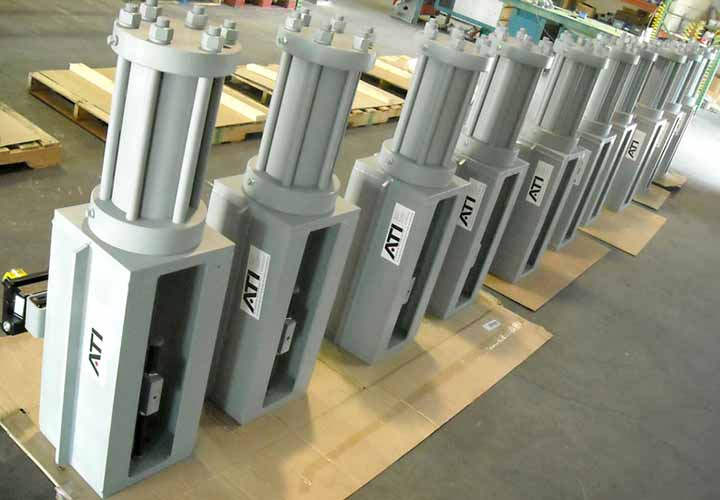Linear Hydraulic ACTUATORS PERFORMANCE
- Our H series actuator is ideal for control valves especially when it incorporates the ATI hydraulic positioning system.
- Our HDH series actuator has been effectively used for on/off applications such as steam blow applications that require very fast opening speeds.
- The adaptable nature of our design allows you to automate valves in place without shutting the plant down.
The Two Types of Linear Hydraulic Actuators Offered
Spring Return Actuators and Double Acting Actuators
There are differences that are key to operations and applications. For starters, actuators do not have equal strength abilities with regard to thrust and torque, and below is the difference between the spring return actuator and the double acting actuator with regard to torque and thrust strength:
The double acting actuator is best for high torque loads for the working directions and high thrust strength — thus, ideal for oil and gas industries.
The spring return actuator is not designed for both the working directions and high thrust strength but designed to accommodate torque load that is adept on one side only.
Another difference is with respect to how simple or complex the system is — spring return actuators are simpler in design and operation than the double-acting actuator. Applications that are in volatile environments or use toxic chemicals and that may require emergency shutdowns on demand may consider using the spring return actuator over the double-acting actuator.
How to Choose a Linear Hydraulic Actuator for Your Industry’s Operations or Applications
Selecting the right equipment for your operations and applications can be difficult when the options are manifold. To make the consideration easier on you, here are some factors you should think about.
Compatibility. What is your source of power? Gas, oil, electricity, air? What source of power is readily available for your operations and applications?
Operational Worksite Conditions. Is the operation outside, inside, offshore? Is the operation vulnerable to weather conditions or other environmental conditions? Are there hazardous or toxic substances used in or around the worksite?
Temperatures. Temperature is important with respect to the actuator you get. Some actuators can operate in temperatures as low as -40° F and as high as 250° F. Not all actuators will perform at the same temperature.
Speed. The extent of the speed your operations necessitate will determine the power requirements for performance, and power requirements will determine the actuator you need.
Safety and reliability. Because so many operations and applications in the industries related to oil and gas, power, chemical, paper, mining, and water can be so hazardous, choosing an actuator according to application specifications, safety, and reliability, is critical.
Select the Linear Hydraulic Valve Actuator for Your Operations
Like all actuators, each serves a purpose and provides benefits. The linear hydraulic valve actuator designed with purpose. Choosing the right one comes down to your specific requirements, needs, and concerns. Don’t select an actuator in haste; thoughtfully select with performance in mind — as we did when we designed and developed our actuators.

